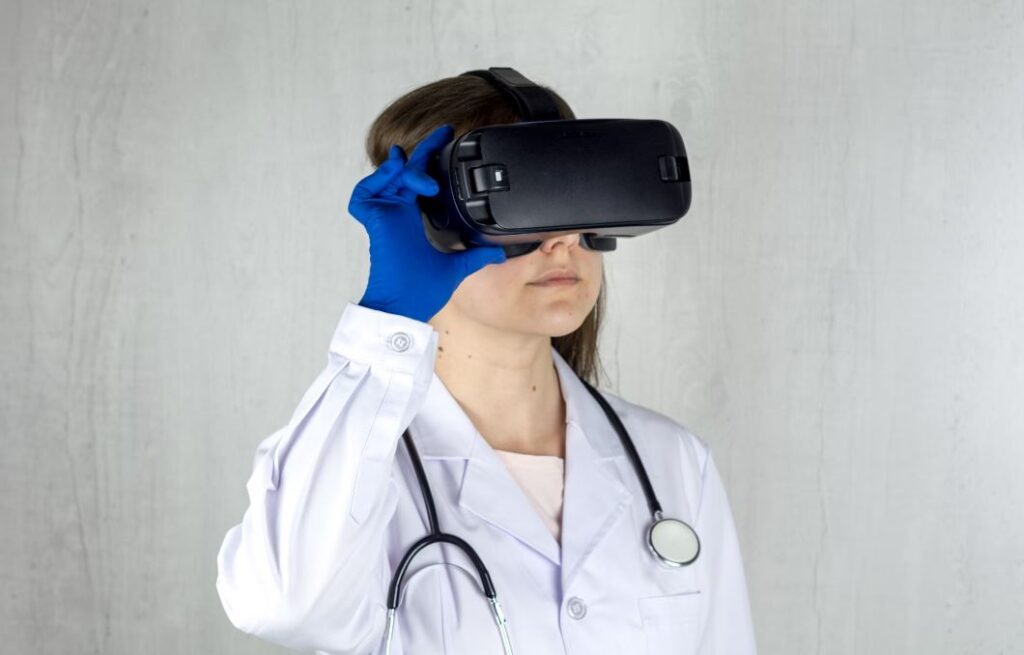The rise of virtual reality (VR) technology has extended far beyond its initial reach of entertainment and gaming industries. As a matter of fact, it’s evolved into hardware with the capabilities to redefine many other alternative sectors that hadn’t been considered.
VR technology has the potential to deliver immersive and simulated environments for all kinds of applications, solving challenges and enriching experiences in ways that wouldn’t be possible in the physical world.
If you’re wondering about some of the alternative touchpoints for VR technology worldwide, read on as we explore a quartet of different applications for VR.
Simulated medical training
Medical students are increasingly leaning on the benefits of VR technology to improve their knowledge and surgical expertise in a risk-free, controlled environment. VR programs now exist to give medical students the ability to carry out complex surgeries, without the risks associated with practicing during real-life operations.
Additionally, VR technology is also being used to replicate patient interactions with trainee doctors, enabling newly-qualified medical professionals to hone their bedside manner and deliver the most thorough and sensitive healthcare services. VR technology can create life-like scenarios for trainee doctors and surgeons to negotiate, be it diagnosing a condition or illness or mastering trauma care. Advancements in VR technology have better-equipped trainee medical professionals for the hard yards of their careers.
Virtual poker room environments
One alternative area of entertainment where VR technology has made a bigger-than-expected impression is virtual poker. By donning a compatible VR headset, players can transport themselves into virtual poker rooms, enjoying the sights and sounds of a land-based poker room – complete with all the drama.
By wearing a VR headset, virtual poker players can interact with other players in real time and even hold virtual cards and stack chips. It’s also possible to observe the body language of players to try and get physical tells on a player’s strength or weakness. By incorporating the social elements of a brick-and-mortar poker room, VR poker technology is getting a leg up on conventional online poker rooms. It’s an exciting way for first-time poker players to dip their toes into the water of Texas Hold’em, while seasoned players can also rediscover the feeling of playing at the felt.
Visualization of real estate and architectural concepts
The application of VR technology has redefined the efficiency and immersivity of contemporary architecture, as well as the real estate market. VR-led viewings have changed the way prospective buyers look to acquire residential and commercial properties. Units can be explored remotely using VR headsets. This gives people a realistic sense of scale, as well as the general layout and functionality of available floor space.
From an architect’s perspective, VR headsets also give a unique opportunity for end-users to visualize construction and design projects in full 3D. It’s a genuine step-change from having to interpret blueprints and floor plans in 2D format. Stakeholders can use VR technology to get on board with everything during the design phase of a rebuild, including the visualization of materials used, spatial planning, and lighting.
Virtual shopping experiences and e-commerce
VR technology also gives retailers new ways to engage with their target demographic. With the use of VR headsets, consumers can now explore a retailer’s entire product range in a virtual setting – without having to set foot in their showroom. IKEA is one of Europe’s best-known value furniture retailers. The IKEA VR experience gives shoppers the ability to arrange IKEA furniture in virtual rooms, allowing potential buyers to visualize how they would look in their own rooms to scale.
It’s a similar story with clothing retailers, with virtual dressing rooms being readied for users to ‘try’ new outfits on in virtual reality to see how they look and fit. It’s redefining customer satisfaction, giving buyers a realistic view of products before going to the online check-outs.
With VR hardware sure to improve in the coming years, allied with improvements to augmented reality (AR), it’s certain that VR technology can further improve the way we play, buy, design and build in the real world.


